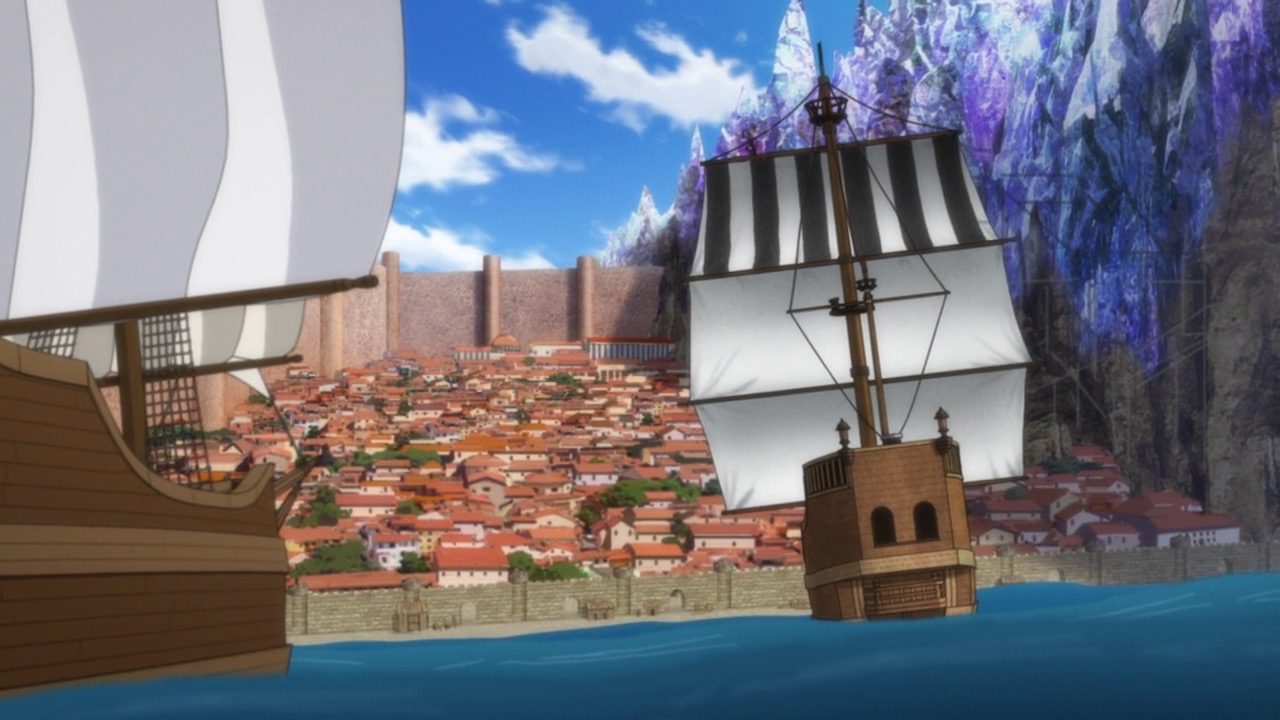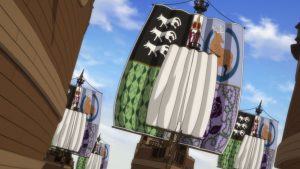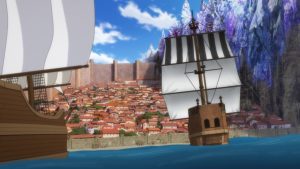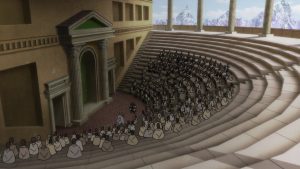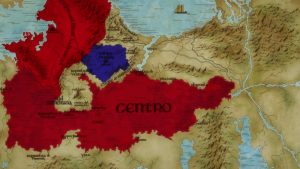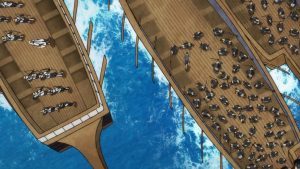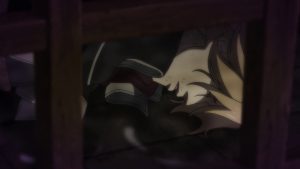Dust off those history books…
MAPPA’s involuntary hiatus from the anime schedule formally comes to an end with the return of Shoukoku no Altair, which like Shingeki no Bahamut had to cool its jets while high jumpers and sprinters dominated Japanese TV for a couple of weeks. There are some similarities between these two shows, certainly – both are straightforward storytellers with solid casts of characters, though “Virgin Soul” is the better (and better-animated) thus far. Perhaps this is emerging as something of a house style for MAPPA, though I think it’s too early to make a definitive call on that.
No question, “Altair” has swallowed a lot of Eurasian history textbooks and spits them out considerably more intact than Arslan Senki (that’s neither a criticism or praise of either approach – just an observation). We have some new entries into the game of thrones here, starting with the state of Phoinike – an obvious allusion to the Phoenician Empire. Or rather, what’s left of it – even in this medieval setting Phoinike (like Phoenicia in medieval RL) was a shadow of the great empire it was, though still culturally vibrant and rather attached to its historical legacy.
Shoukoku does take a bit of historical liberty in the hodgepodge of intrigue that follows, with Phoinike being protected by what’s clearly modeled after the ancient lighthouse of Pharos, which was actually in Alexandria. Mahmut has just arrived in Phoinike and briefly met up with Kiros (the estimable Kenn, also an Arslan connection – I’ll keep mentioning those, as I know it annoys fans of both series), the local Kulak agent and son of a corrupt Phoinikean (?) noble against whom he’s rebelling. But Mahmut has been beaten into town by Graratto, Louis’ Imperial man who’s in town to demand that Phoinike allow Balt-Rhein to use part of its port as a staging area.
The politics of this are interesting. Mahmut had no idea any of this was taking place as far as I can tell, but he’s wandered into a crucial situation not just for the locals, but Turkiye. If the Empire effectively occupies Phoinike, Turkiye will be surrounded on three sides. His vested interest is obvious, but the Magistros sees a benefit in dragging Mahmut into the conflict – the perception that Turkiye is allied with him against the Empire. Mahmut’s exploits in Hisar have gained him a reputation as well as a demotion, it seems, even if it isn’t totally accurate. Again we see Mahmut as rather naive here – he knows he’s being used, but is unable to prevent it. He’s also unable to prevent the magistros from taking his nation into conflict with Balt-Rhein, and joining them in being besieged by the Imperial fleet.
The lynchpin of the Phoinike strategy is the assistance of the Venedik (obviously, this is Venice, one of the medieval world’s great naval powers) navy in breaking the siege. The walls of the city may have stood unbreached for 3,000 years (though Louis intends to test that record) but eventually the city would be starved out without aid from the outside. When that aid hasn’t shown up for 15 days Mahmut (for some reason) offers to go plead for it directly, not sharing the Magistros’ faith that he knows the Doge of Venedik well enough to know he won’t be betrayed, but isn’t allowed to leave.
Mahmut is, as ever, following his ideals here – the idea that war should be avoided at all times. And of course in a perfect world he’s absolutely right, but no world (least of all the one this series is set in) is perfect. As much strategic interest as Phoinike and its port holds for Turkiye, it seems to me that allowing himself to be exploited the way he has was not the best way to approach the situation – even Kiros is more concerned about his homeland than the larger aims of the Kulak. It’s all part of the learning curve for Mahmut – one which will hopefully see him become much more of a proactive player in events like this, and less a reactive one.


